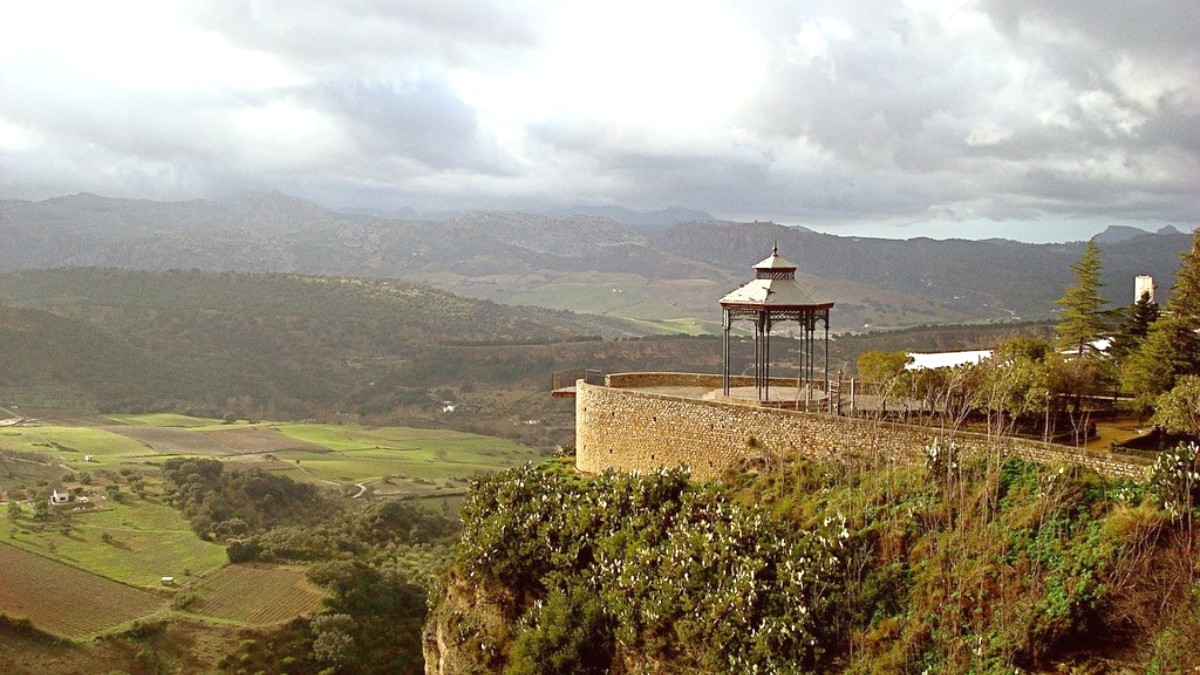
Andalucia, Spain
Visitors journey here to witness architectural marvels, explore ancient pathways, and enjoy the region's slower pace of life. The town offers a tranquil escape from the bustling coastal resorts while delivering ample opportunities for activity and exploration. Its charming old town, La Ciudad, feels like a living museum with narrow, winding lanes, historic palaces, and quiet squares. The newer Mercadillo district, though more modern, retains character with its famous bullring and lively commercial areas.
Beyond the town's immediate allure, the surrounding countryside presents natural beauty and a network of white villages. These villages, with their whitewashed walls and traditional way of life, provide a contrast to Ronda's grandeur. Travelers often find themselves captivated by the stark cliffs, the verdant valleys, and the clear Andalusian light that illuminates this region.
Ronda serves as a perfect base for exploring the heart of inland Andalusia. It welcomes those seeking authenticity, dramatic landscapes, and a deep connection to Spanish tradition.
Ronda sits in the province of Malaga, located in the autonomous community of Andalusia, southern Spain. It occupies a high plateau, 750 meters (2,460 feet) above sea level, giving it cooler temperatures than the nearby Costa del Sol, especially in the evenings. The town's most distinguishing feature is the dramatic El Tajo gorge, a 100-meter (330 ft) deep canyon carved by the Guadalevín River. This natural divide splits Ronda into its two distinct parts: the ancient Moorish town (La Ciudad) and the newer Mercadillo district.
The surrounding landscape is part of the Serranía de Ronda, a mountain range that forms a natural barrier and delivers stunning vistas. The area is rich in natural parks, including the Sierra de Grazalema Natural Park to the west and the Sierra de las Nieves National Park (recently upgraded from Natural Park status) to the east. These parks present a wealth of outdoor activities, including hiking, caving, and birdwatching, within a short drive of Ronda.
100-meter deep canyon splitting Ronda.
Carves the gorge, flows into Guadiaro River.
Mountain range forming a natural barrier.
Creates caves, sinkholes, and dramatic rock formations.
Avoids coastal humidity, preserving authentic atmosphere.
Ronda's elevation presents clear skies and panoramic views, stretching across olive groves, vineyards, and white villages scattered across the hills. The climate here experiences more defined seasons compared to the coast, with hotter summers and cooler, wetter winters, a direct result of its elevation and distance from the sea.
Access to Ronda typically involves travel through the winding roads of the Serranía, adding to the sense of arriving at a special, somewhat secluded place. This journey builds anticipation for the dramatic views awaiting you.
The town's geography influences everything from its architecture, with buildings clinging to the cliff edge, to its local cuisine, which relies on mountain produce and game rather than abundant seafood.
Ronda's unique geographical setting contributes significantly to its charm and distinctive character, making it a memorable destination.
Ronda's history stretches back thousands of years, with evidence of Neolithic settlements in the surrounding caves. Its strategic position made it a desirable location for various civilizations. The Romans established Arunda in the 1st century AD, laying some of the foundations for its later development. However, the Moorish period, beginning in the 8th century, truly shaped Ronda into the town visitors see today.
Under Moorish rule, Ronda became Izna-Rand Onda, a powerful and prosperous taifa kingdom, one of the first independent Moorish states to emerge from the Caliphate of Cordoba. Its natural defenses, high cliffs, and a single approach made it a formidable stronghold. The Moors developed extensive irrigation systems, built palaces, and established the town's urban fabric, including its narrow, labyrinthine streets. Many parts of the old town, La Ciudad, retain this Moorish layout. The Arab Baths, some of the best-preserved in Spain, are a testament to their advanced civilization and daily life.
King Ferdinand II of Aragon conquered Ronda in 1485, leading to new churches atop mosques and integration of styles.
Built in the 18th century, it links the ancient Moorish town with the expanding Mercadillo.
Ronda's bullring (1785) is considered the origin of modern bullfighting on foot.
The Romero family, specifically Pedro Romero, from Ronda, revolutionized the sport in the 18th century, giving it many of the rules and traditions seen today. The annual Corrida Goyesca, an unique bullfight held in early September, pays homage to these historical roots, with participants dressed in 18th-century costumes.
A magnificent bridge connecting the old and new parts of town, providing countless viewpoints for photographs.
A maze of narrow, cobbled streets with Palacio de Mondragón and the Arab Baths, exuding timeless charm.
Home to the historic Plaza de Toros, main shopping streets, modern cafes, and lively plazas.
Ronda maintains a relaxed pace, inviting visitors to slow down and absorb its unique atmosphere.
It balances iconic sights, cultural depth, and natural beauty for a rewarding trip.
Ronda promises a visit that stays with you long after you depart, where history feels alive and scenery inspires awe.